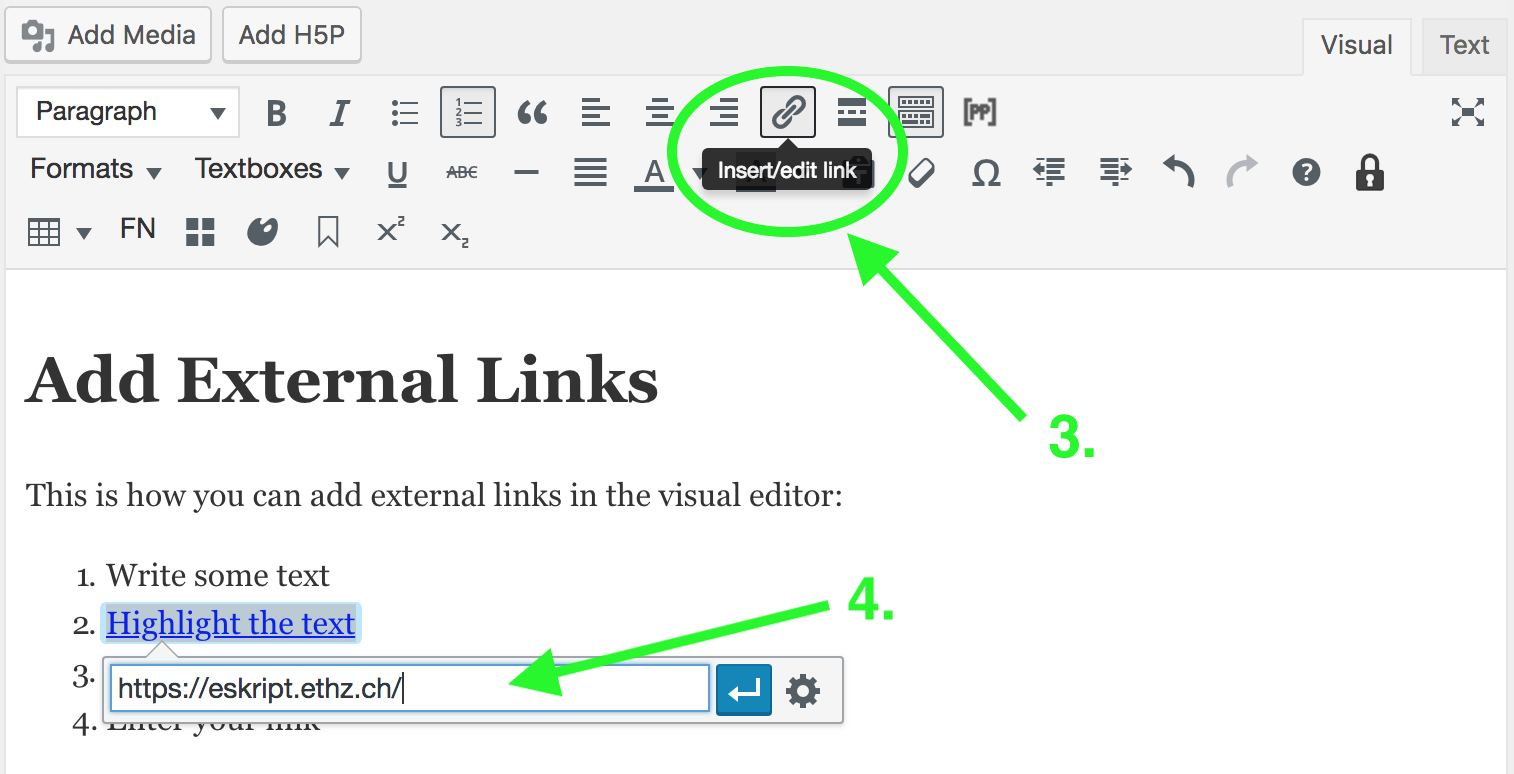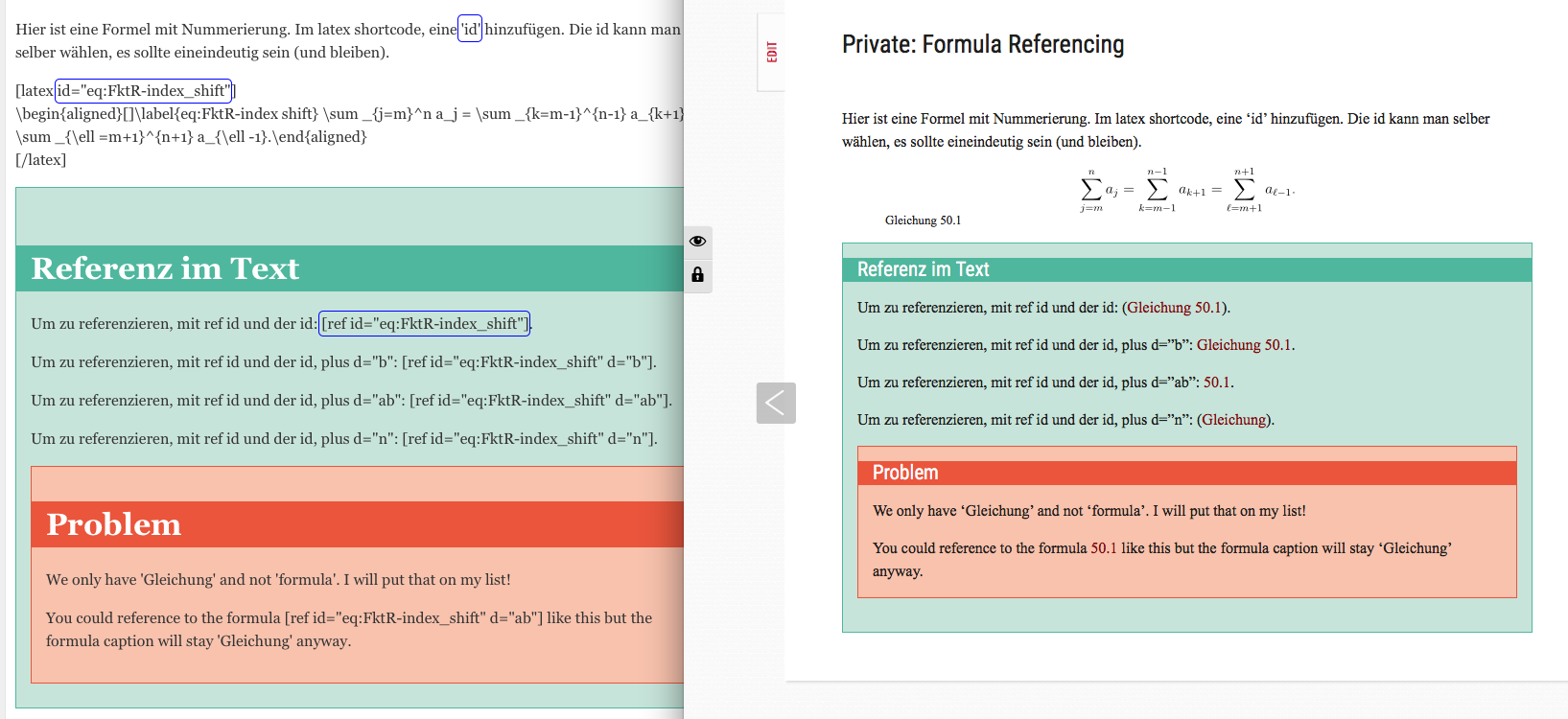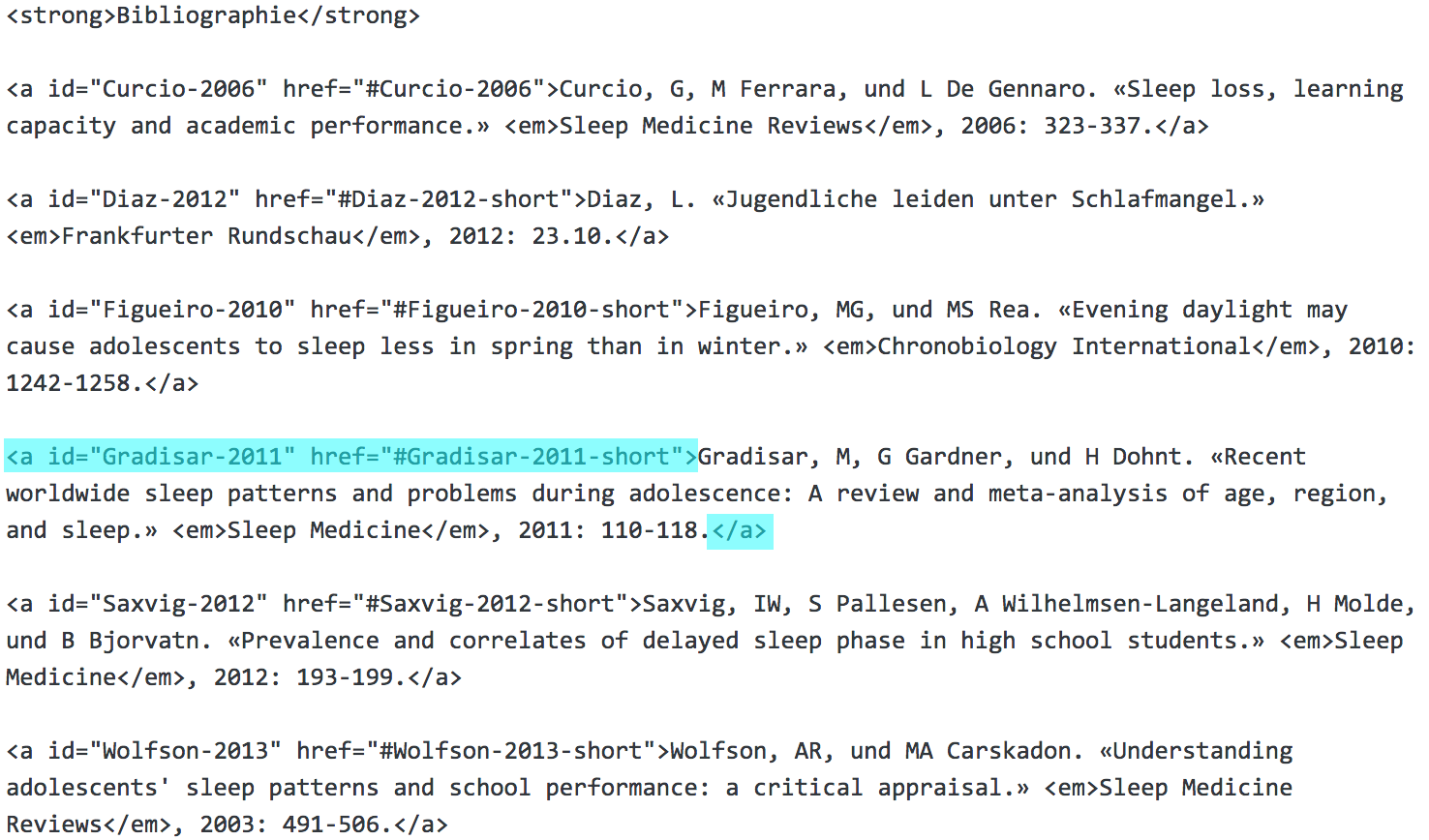18.1 – Add External Links
18.1.1 – Visual editor
This is how you can add external links in the visual editor:
- Write some text
- Highlight the text
- Click on the “Link”-icon in the toolbar
- Enter your link
18.1.2 – Text editor
In the text editor you can add a link as follows:
The yellow part is where the reader will click on, the blue part creates the hyperlink.
18.2 – Add Internal Links (within the book)
18.2.1 – Internal links to chapters, parts or section
If you want to add a link to a part within your book you can use so called “slugs”. Slugs are identifiers of internal locations. They are basically everything that comes after the “eskript.ethz.ch” (including the forward slash).
Example
Here you can go to the chapter “The Editor“.
So you open the chapter and copy this part of the URL:
Then you enter it as a Link:
Any slug can be built like this:
- for chapters: /chapter/[name_of_chapter]
- for parts: /part/[name_of_part]
- for sections: /front-matter/[section_title] or /back-matter/[section_title]
If the chapter is still a draft, you can find the slug in the permalink below the chapter title.
18.2.2 – Custom links to any tags in the text
You can create links to any parts in your text, you just have to tag them. Here are the steps to follow:
- Place your cursor to the part of the text, where you want to link to
- Add an anchor (icon that looks like a flag in the toolbar)
- Give a name to the anchor (must be unique)
- A small icon appears where you placed the anchor
- Go back to where you want to add the link
- Follow the instructions for internal links and add “/#anchorname
Example
Here is an Anchor to the steps of “how to create a link in the visual editor”.
Steps 1 to 3:
Step 4
Step 5 and 6

18.3 – Referring to a Subchapter, Image or Table
In the chapter “How to subchapter and number subchapters” we talked about the two icons that pop up, when you click on a heading.
Here is the explanation for the second icon: When clicking on the “less than” “greater than” icon, a reference ID appears and can be copied onto the clipboard. This reference ID serves as a link to the subchapter and can be inserted into the text whenever needed. 
Example
Here is a reference to the subchapter “Add Citations and References” (Section 18.5). The author of this chapter just simply copied the ID of the subchapter and pasted it into the text.
This is how it looks like in the editor:
Reference IDs cannot only be obtained for subchapters, but also for images and tables. The respective reference IDs can always be obtained by clicking on the “less than” “greater than” icon.
Note on table numbering and referencing
Although the referencing of tables works, table numbering doesn’t (click on the first pop-up icon). If you want to number your tables, put the reference code into the table caption (or just below the table).
18.4 – Referencing Formulas
You can also let your formulas be numbered by adding and ‘id’ in the latex shortcode. To reference, use the ‘ref id’ shortcode and use the id of the formula!
18.5 – Citations and References
This subchapter handles the input of citations and references in eSkript.
For informations about the citation etiquette at ETH, have a look here.
There are short citations and full citations. The short citations are the ones in brackets placed directly behind the cited text. The full citations are placed at the end of the chapter in the subchapter “References/Bibliography”. The full citations are mandatory, the short citations are helpful but you can also just insert the full citation as footnote (Section 18.6) to the cited text. If you need the short and full citations to link back and forth, you need to do it in the TEXT Editor.
Steps:
- Write the citations as you would in a textfile
- Add the following code around your short citation
< a id=”short-citationID” href=”#full-citationID”> short citation </a> - Add the following code around your full citation
< a id=”full-citationID” href=”#short-citationID”> full citation </a> - Put the ID of the short citation into the link (href) of the full citation and vice versa
Note: the IDs can be any word, but they have to be unique, like the anchor names we saw before!
Example
Veränderung der Chronobiologie bei Jugendlichen
M. Ende, A. Muster, F. Schweizer
Fragestellung
Lehrer beklagen sich über Schüler die morgens noch schlaftrunken in den Bänken sitzen. Haben Teenager tatsächlich eine andere innere Uhr als Kinder?
Literaturübersicht
Der Schlafrhythmus verschiebt sich in der Adoleszenz auf der ganzen Welt mit zunehmendem Alter nach hinten, was zu verkürzten Schlafzeiten an Schultagen und verlängerten Schlafzeiten an Wochenenden führt (Gradisar, Gardner und Dohnt 2011). Bei stärkerer Ausprägung kann dies auch zu schulischen Schwächen führen (Saxvig, et al. 2012) (Wolfson und Carskadon 2003). Vor allem der präfrontale Cortex scheint unter dem Schlafmangel zu leiden (Curcio, Ferrara und De Gennaro 2006). Verlängerte Lichtexpositionen sowie Pubertät führen zu einer verzögerten Ausschüttung des Schlafhormons Melatonin und scheinen somit eine der möglichen Ursachen zu sein (Figueiro und Rea 2010). Aber auch der hohe Medienkonsum könnte Verursacher dieser Probleme sein (Diaz 2012).
(…)
Bibliographie
Diaz, L. «Jugendliche leiden unter Schlafmangel.» Frankfurter Rundschau, 2012: 23.10.
(…)
18.6 – Footnotes
To add footnotes put the cursor where you want a footnote, click on the FN symbol in the toolbar and enter the footnote text or put the text for the footnote between the brackets[1].
![]()
- Footnote Text ↵









